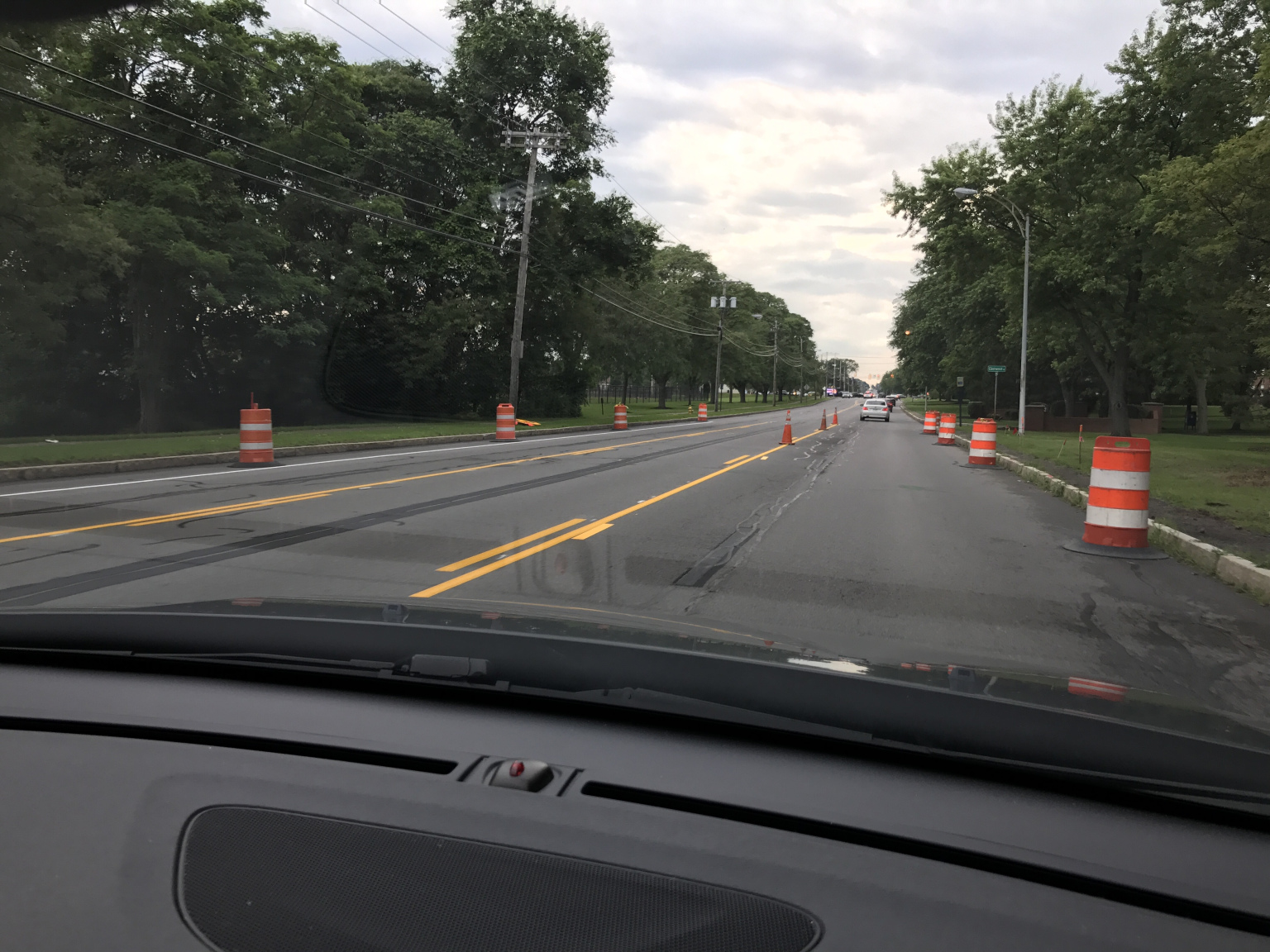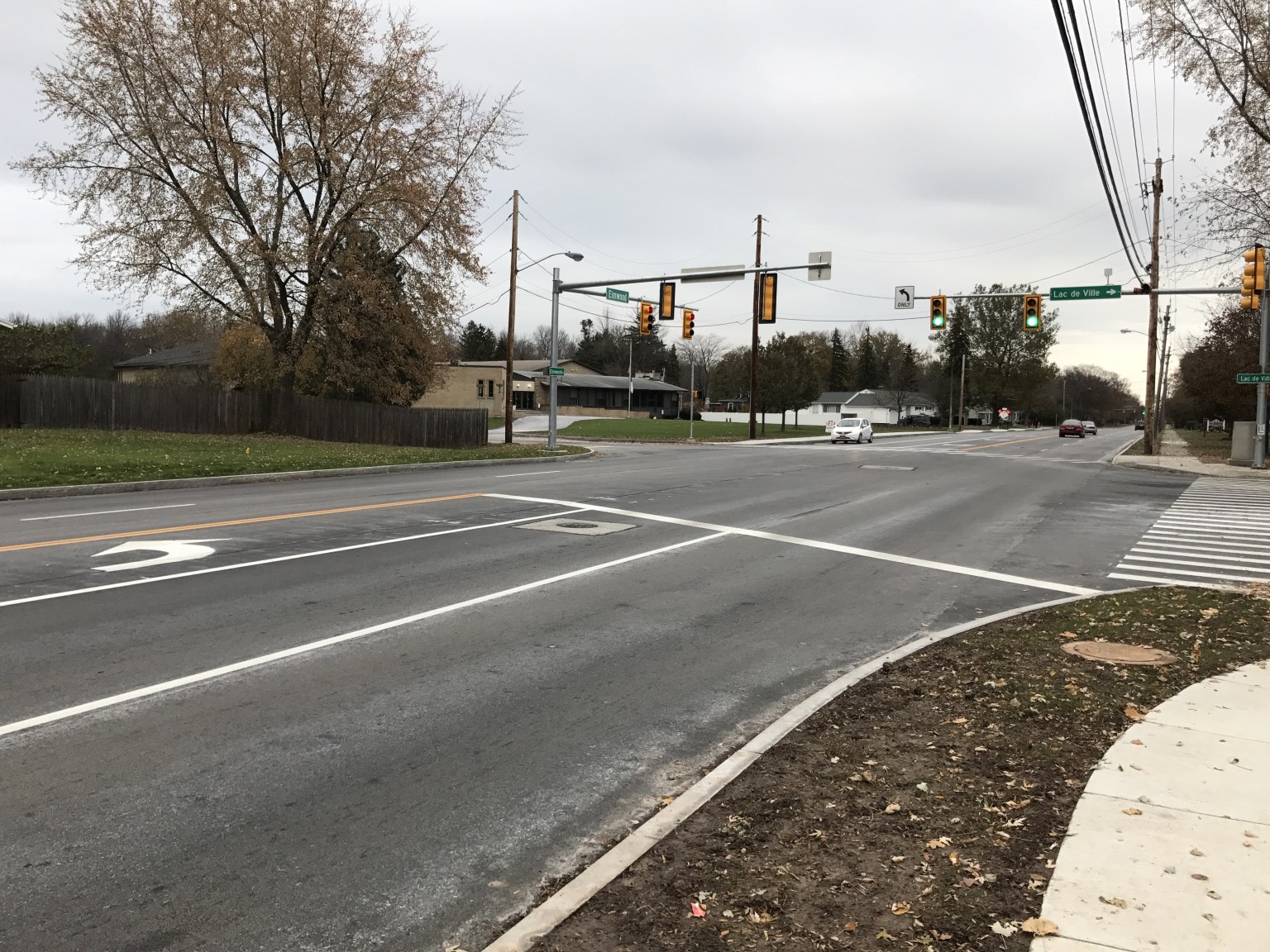Residential Moats: Greater Rochester's Elmwood Avenue
Strong Towns member Arian Horbovetz lives in upstate New York and blogs at The Urban Phoenix. This post is republished from his blog with permission. In it, he identifies a case of one of the most pervasive problems in North American cities: wide, fast streets (or rather, stroads) that act as “moats” cutting off people and neighborhoods from each other. Does your city have any of these that are crying out for an effort to #slowthecars? –Strong Towns staff.
As the outskirts of Rochester, New York, blend into the inviting neighborhoods of Brighton, a first tier suburb with a solid residential base, we find one of the most quietly disruptive 4-lane highways posing as a street in the metro area. Elmwood Avenue is your typical 40-plus-foot wide monstrosity, carrying between 9,000 and 21,000 cars per day (depending where on the road you find yourself) that laughingly posts a 30-35 mile per hour speed limit which has never been followed (not even close) as it handles traffic to and from Rochester’s largest employer, The University of Rochester/Strong Hospital.
One might expect this scenario from a “stroad” flanked by big-box retail stores and chain restaurants, but this section of road is predominantly home to houses and apartments, as well as a funnel for some beautiful and quiet residential side streets. Senior living, a library, a nature park and two schools also reside along this stretch of highway that just doesn’t seem to fit the needs or the scale of the surrounding environment.
Speeding rush hour traffic is a regular occurrence on Elmwood.
There is no safe option for the many people who live near Elmwood Avenue to cross it on foot in this nearly mile-long stretch.
In the nearly 3-mile stretch between Brighton’s Twelve Corners and South Avenue, Elmwood Avenue accepts traffic from over 1,000 homes and apartments residing on or adjacent to the road itself. Unfortunately for this corridor there are only 11 crosswalks, an average of one every 0.23 miles [1214 feet]. There is no shoulder whatsoever, and a significant stretch is devoid of a sidewalk on the northernmost side. Furthermore, a jaw dropping 0.7-mile stretch that encompasses over 100 houses, 500 apartments and a senior center has no crosswalk at all, making any attempt at traversing this section of road a real life game of “Frogger.”
Below is an image featuring the Brighton Library and a nearby crosswalk… the closest of which lies approximately 1/10th of a mile away. Many will argue that this is far from an unreachable distance, but direct pedestrian access to key community resources is vital to creating a people-first, car-second approach to neighborhood resilience.
Want to get to the library from the south side of Elmwood Avenue? The nearest crosswalk is circled in red.
We highlight crosswalks specifically because they have two distinct impacts on the surrounding environment. They welcome and prioritize pedestrians, and, if done right, they have the power to limit vehicle speeds, which makes our roads safer for everyone.
Another example of Elmwood’s failure is the lack of bike access. With no shoulder to speak of, cyclists commuting to Rochester’s largest employer are subject to a terribly inhospitable environment. As a commuter corridor that acts as a funnel for workers of all socioeconomic levels, Elmwood is the classic example of a road that accommodates one form of transportation: the fast-moving car.
The University of Rochester Medical Center charges employees for parking, a fee that could be avoided by many who might choose alternative transportation to and from work, like cycling. But the lack of any bike infrastructure on one of the Hospital’s major “feeder” roads make this a dangerous and uncomfortable task. Who knows how much traffic might be eliminated by simply reducing Elmwood to 2 lanes and adding additional bike and transit infrastructure?
Recently, a road construction project on Elmwood created a temporary two-lane scenario over a small stretch of the roadway. My hope was that this might be the first step toward a “road diet” or a lane reduction with space dedicated for cycling and pedestrian infrastructure. Unfortunately, the final result was just the opposite, a widening of this stretch of road to 5 lanes (4 lanes and a turning lane). The chance to reset the terribly unnecessary 4-lane environment that plays host to only 9,000 cars per day was squandered, leaving alternative transportation options out of the mix once again.
Elmwood’s “identity crisis,” stuck in between a major highway and a residential artery, is a relatively common scenario, and one that I have personally dealt with for years now, as this is where I live. As a driver, I find the four lane/no turning lane format with no shoulder can be especially dangerous for left turning vehicles. As a cyclist, the lack of a shoulder or bike lanes makes this stretch horrifically inhospitable. And finally, as a pedestrian, the lack of automobile speed control and the distance between crosswalks makes this stretch of road unwelcoming for anyone on two feet. It works for no one.
And these shortcomings will continue to be tested in the near future as plans for razing the adjacent abandoned psychiatric center and subsequent development will create an even greater urgency with regard to Elmwood’s safety and accessibility.
And still, this is just one of the many unappreciated examples of how expressway-like roads disconnect and disrupt our predominantly residential communities. In a neighborhood ripe for pedestrian prioritization, Elmwood Avenue acts as a moat, dividing residents from jobs, resources and a better overall living experience.


